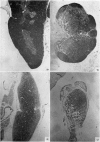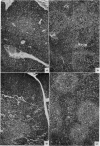Abstract
Hypopituitary dwarf mice are immunologically deficient. This deficiency can be overcome by injection of somatotropic hormone and thyroxin. Antibody formation in hormonally reconstituted mice as measured by the number of plaque-forming cells against sheep erythrocytes equals or surpasses that of normal mice. The number of nucleated spleen cells is increased in both normal and dward mice after treatment with hormones. The hypotrophic thymus and peripheral lymphoid tissue of dwarf mice can be reconstituted to normal by treatment with somatotropic hormone and thyroxin.
Anti-somatotropic hormone and anti-thyrotropic hormone antisera produce suppression of antibody formation. These effects can be reversed by somatotropic hormone and thyrotropic hormone. The anti-hormone antisera produce an involution of thymus and other lymphatic organs. A parallelism exists between involution of the lymphoid tissue, neutralization of circulating somatotropic hormone and depression of antibody production.
These results stress the importance of the thymus—hypophysis relationship for cell differentiation with particular reference to the maturation of the immunological capacity.
Full text
PDF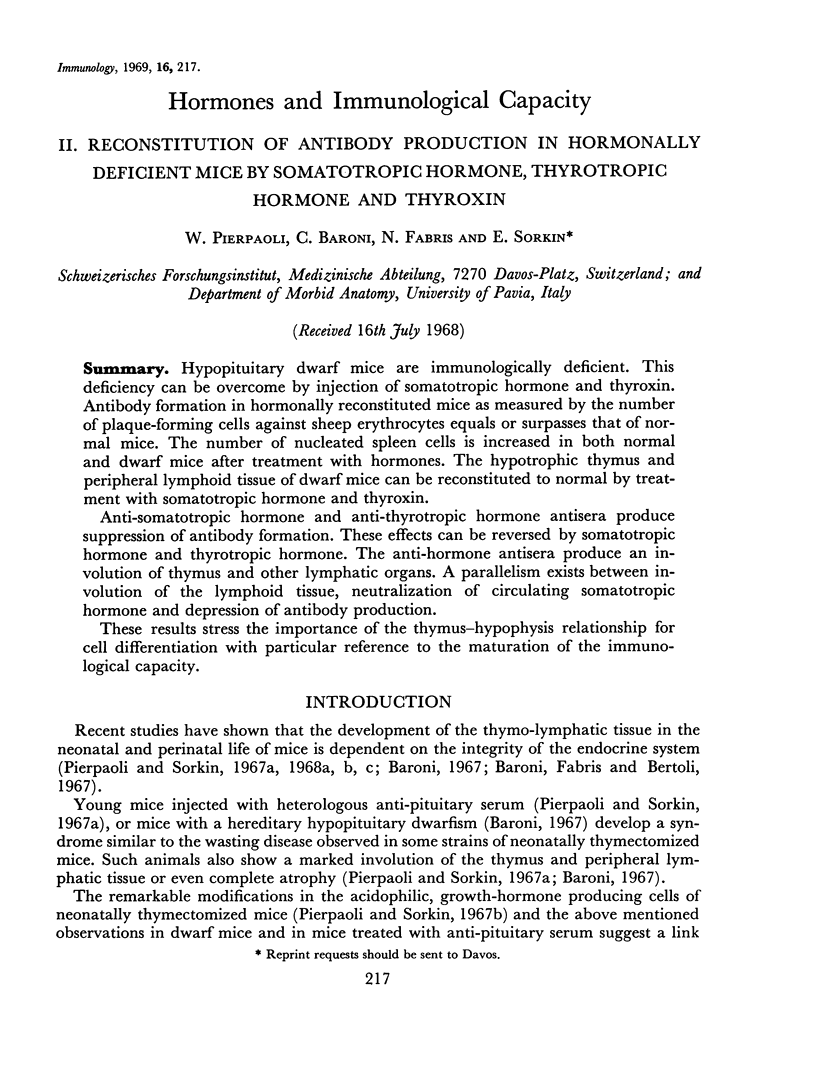
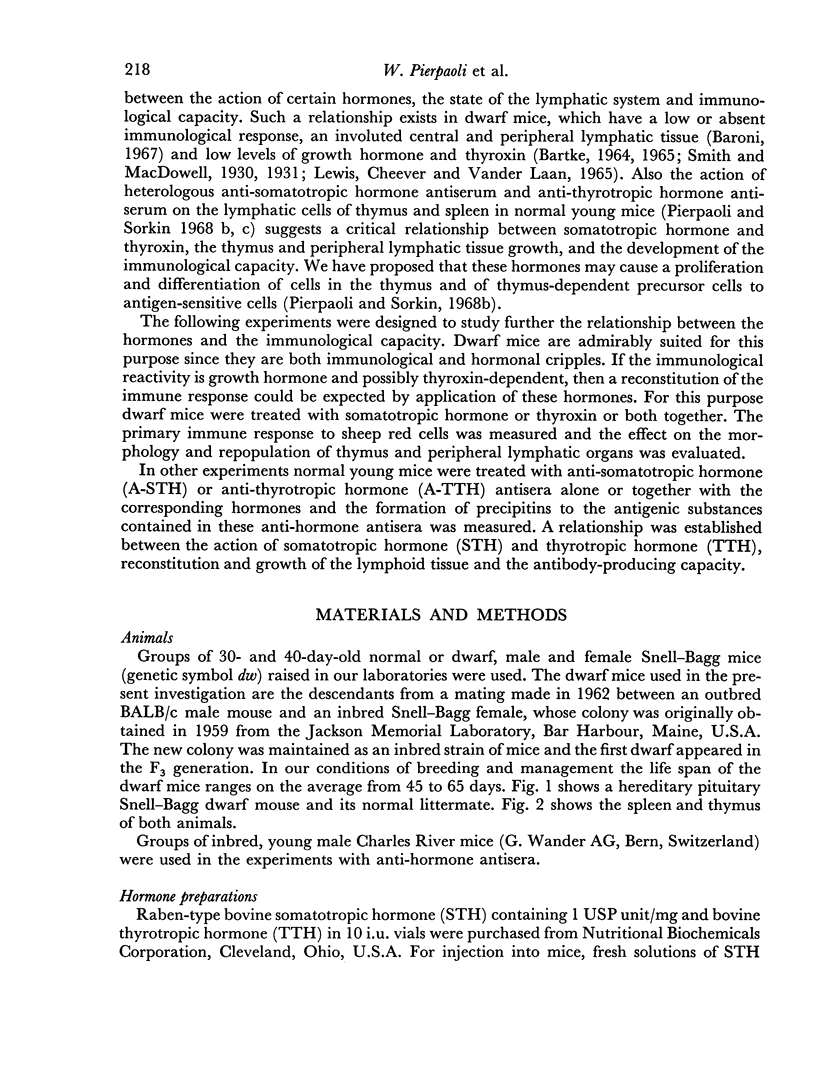
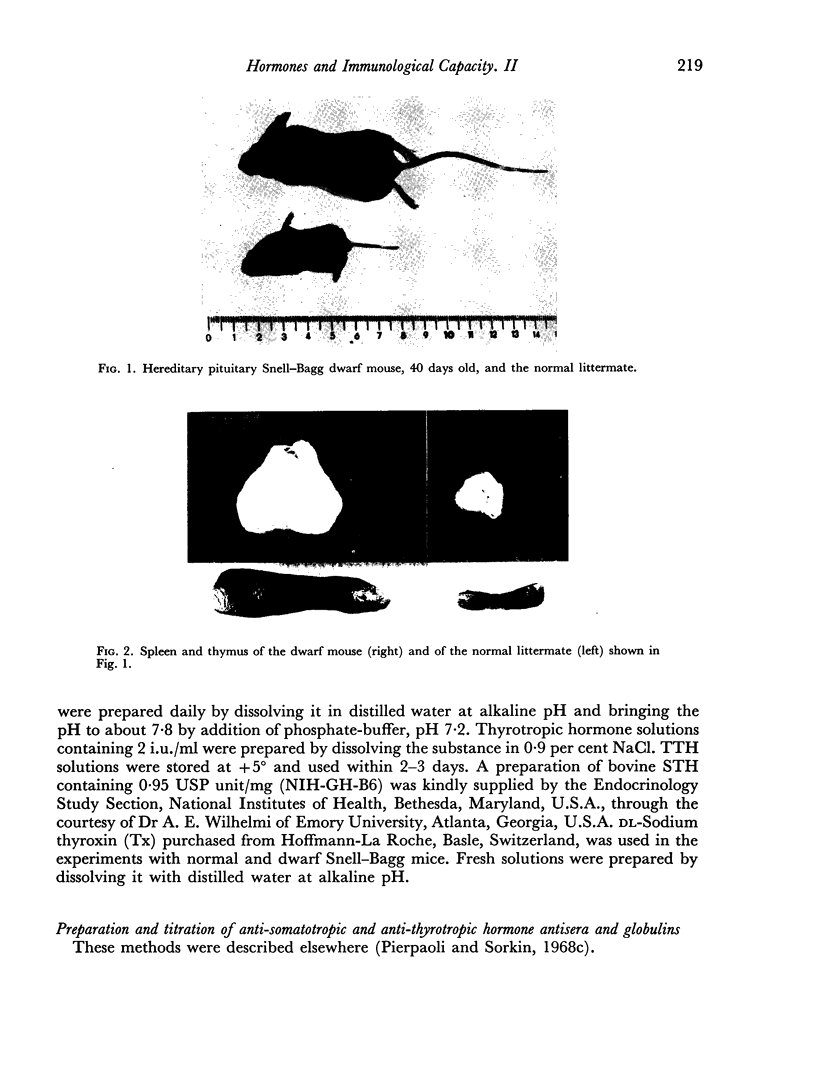
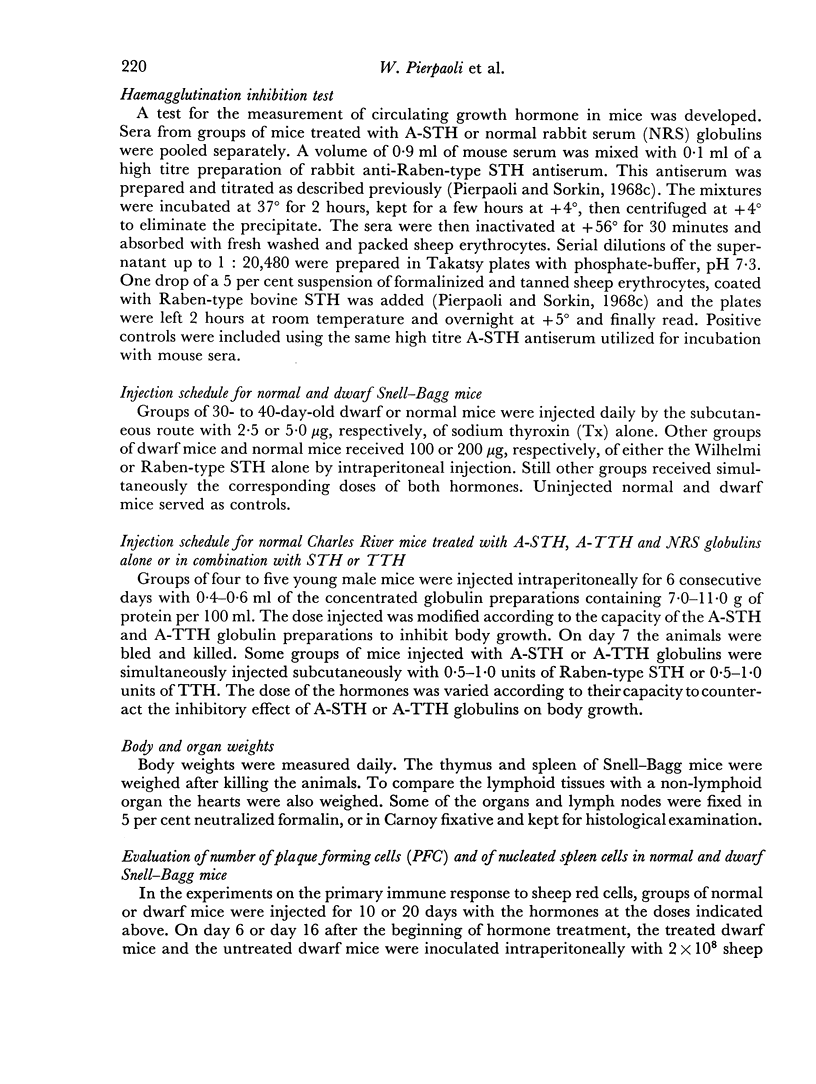
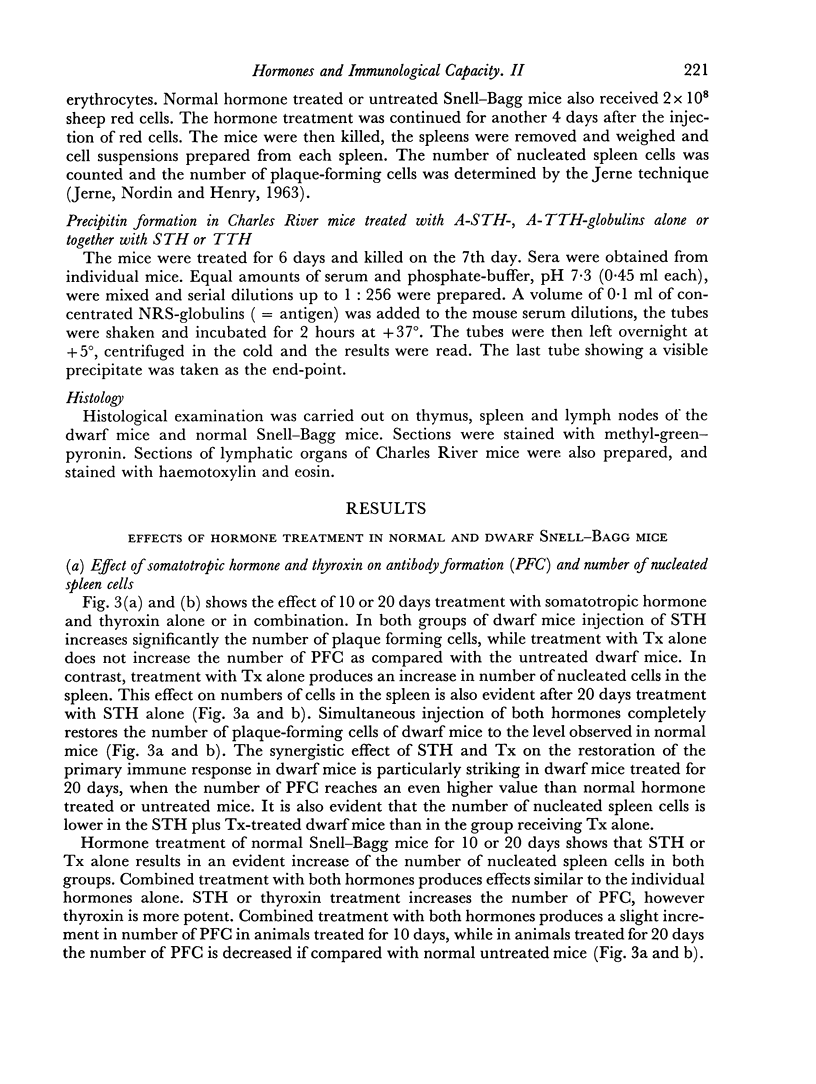
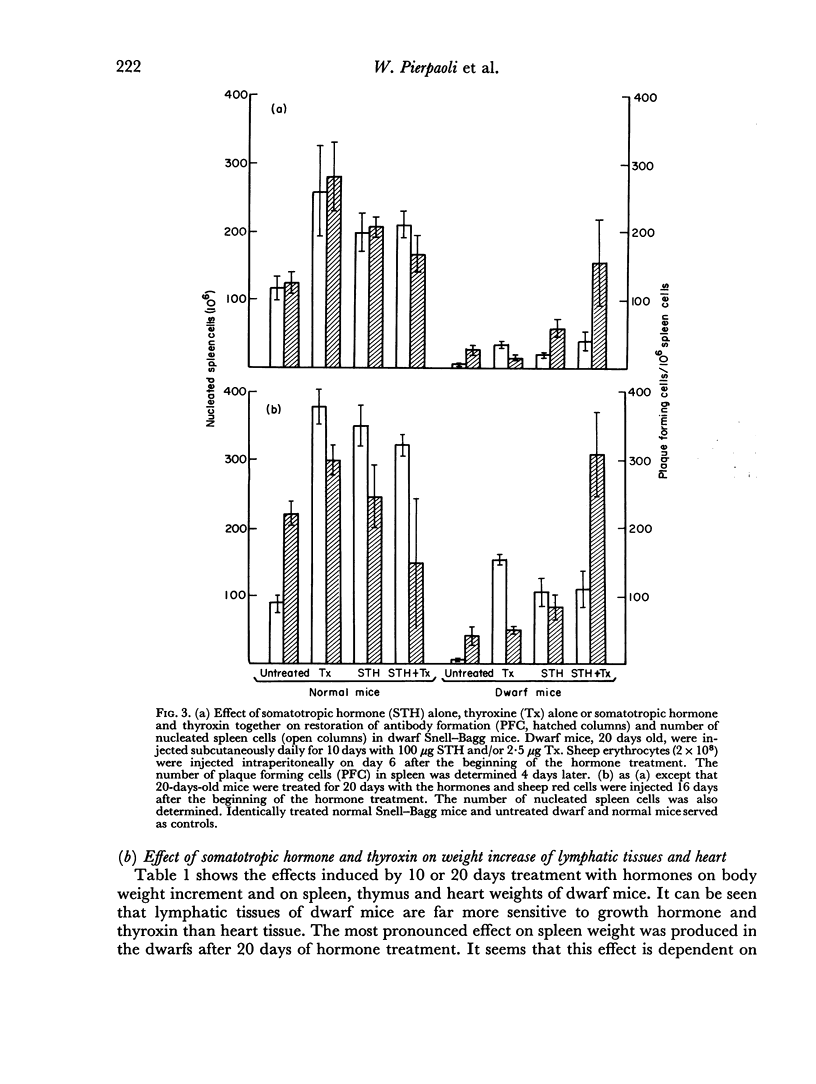
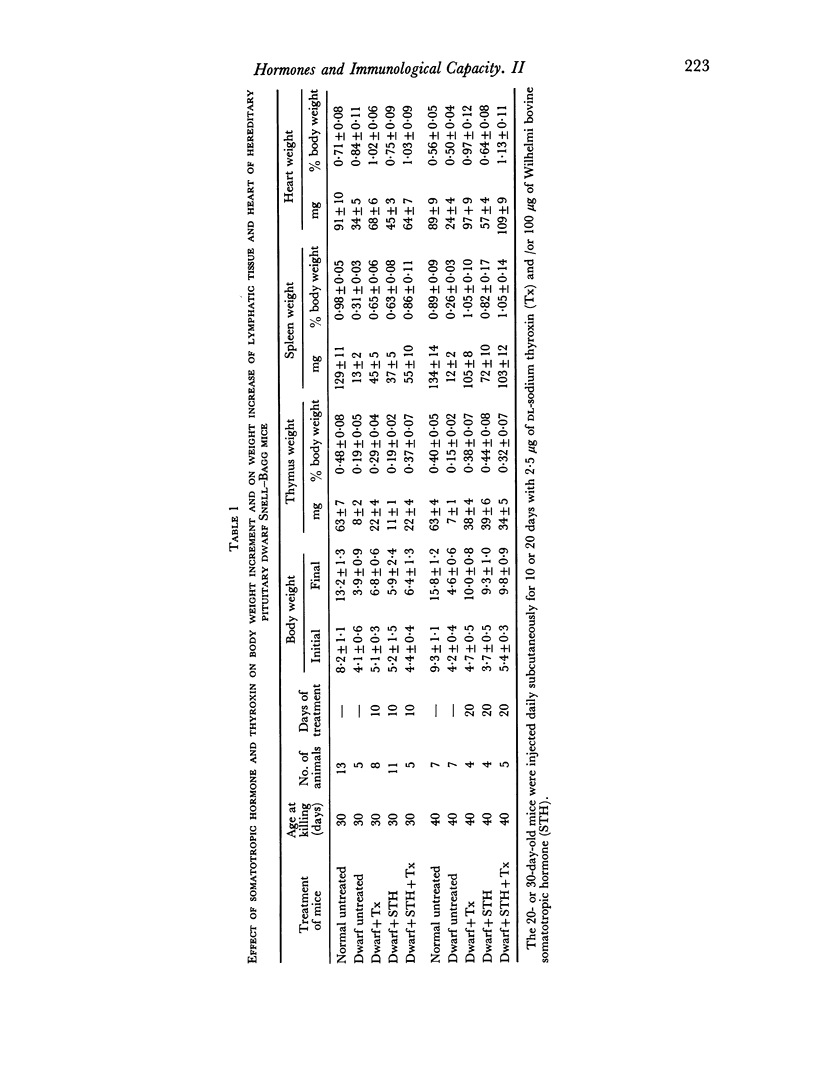
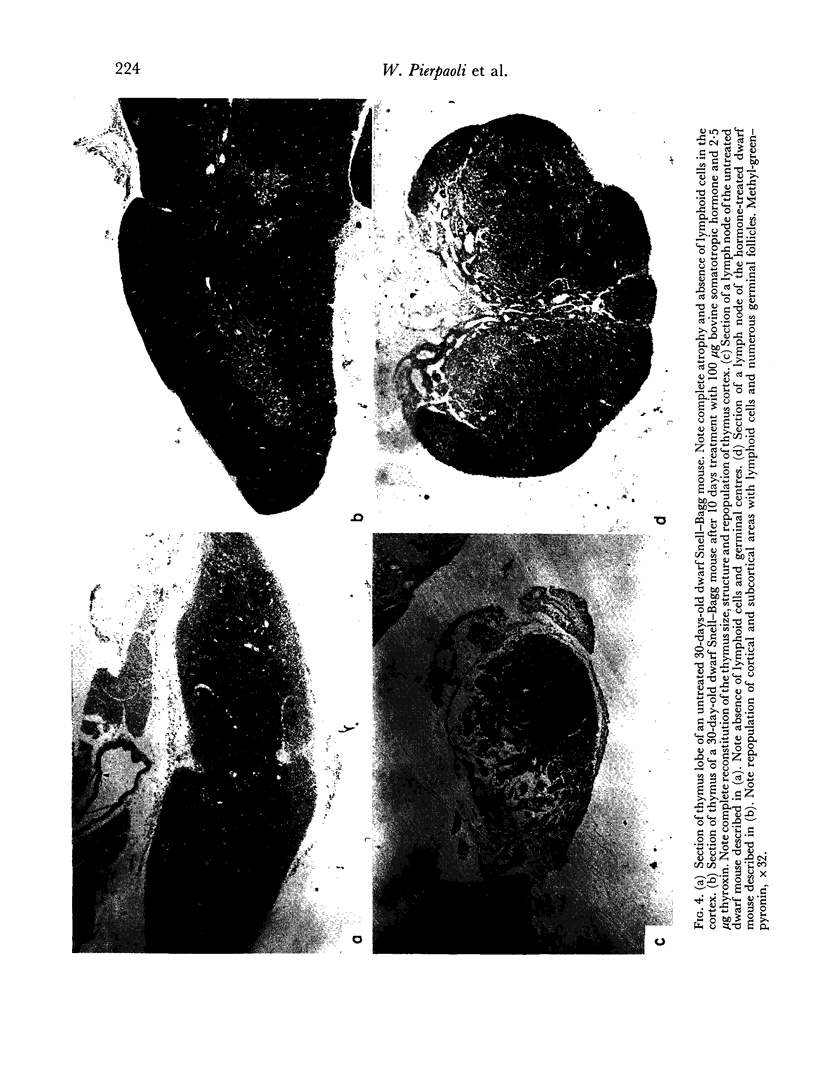
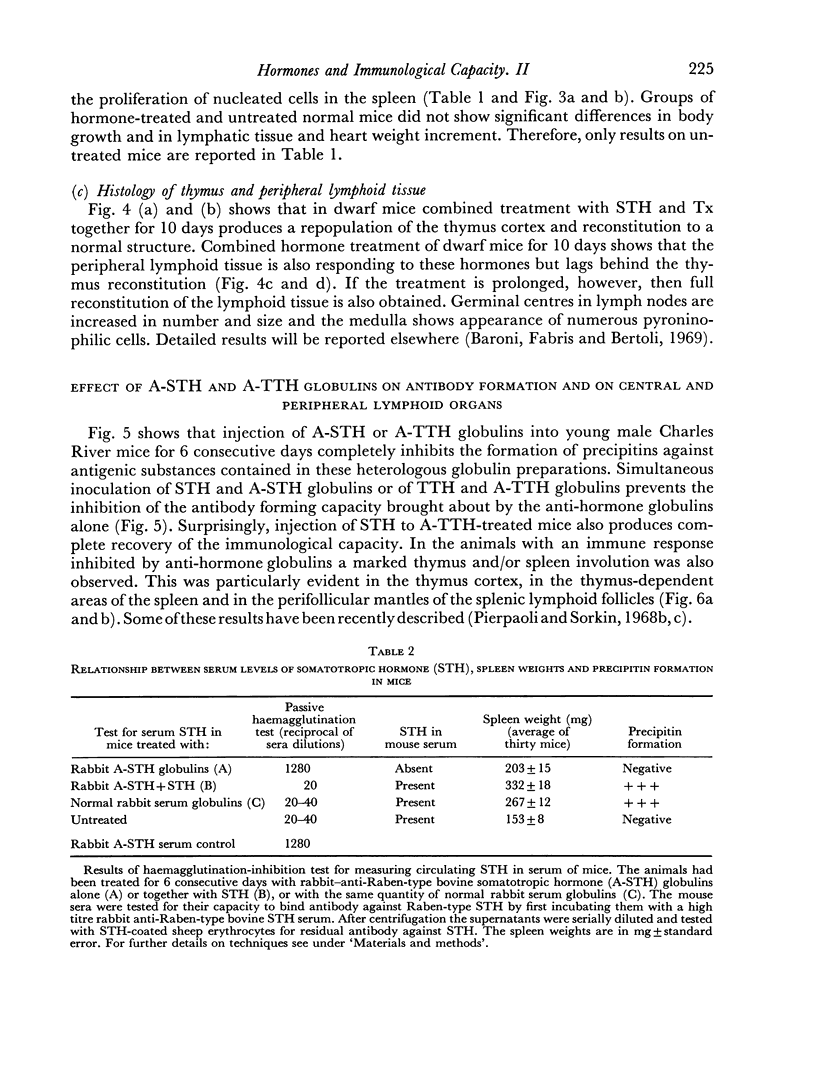
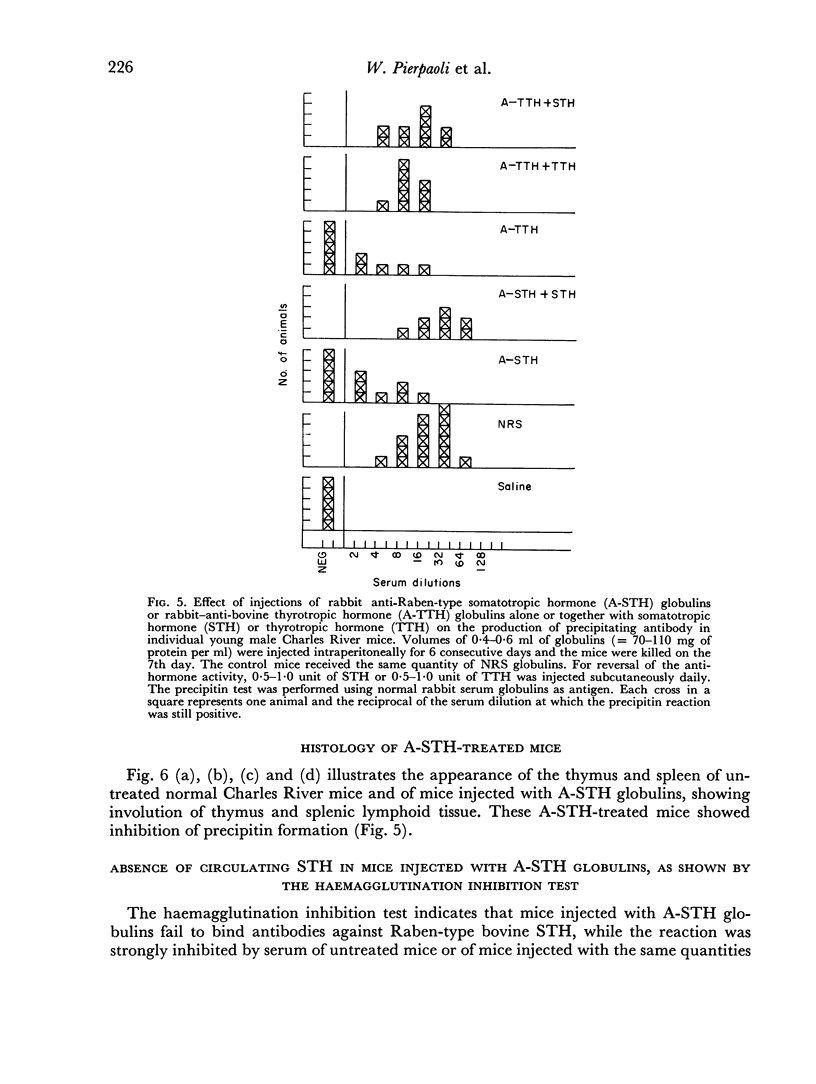
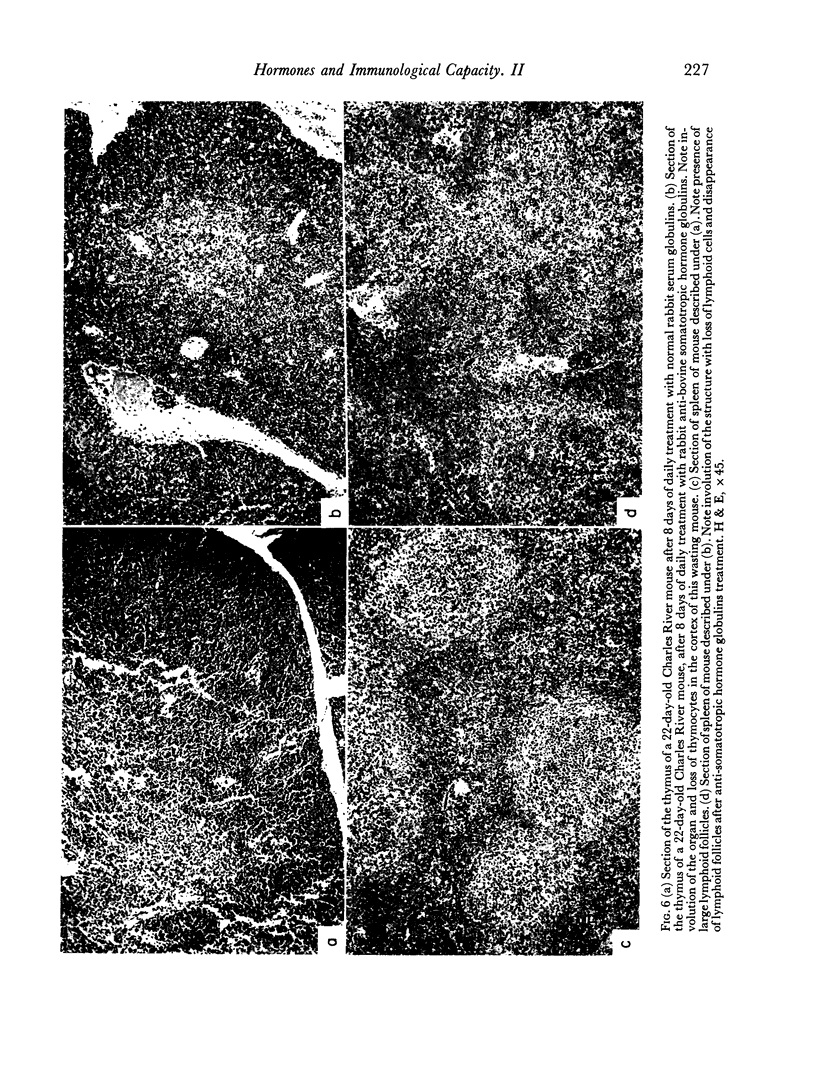
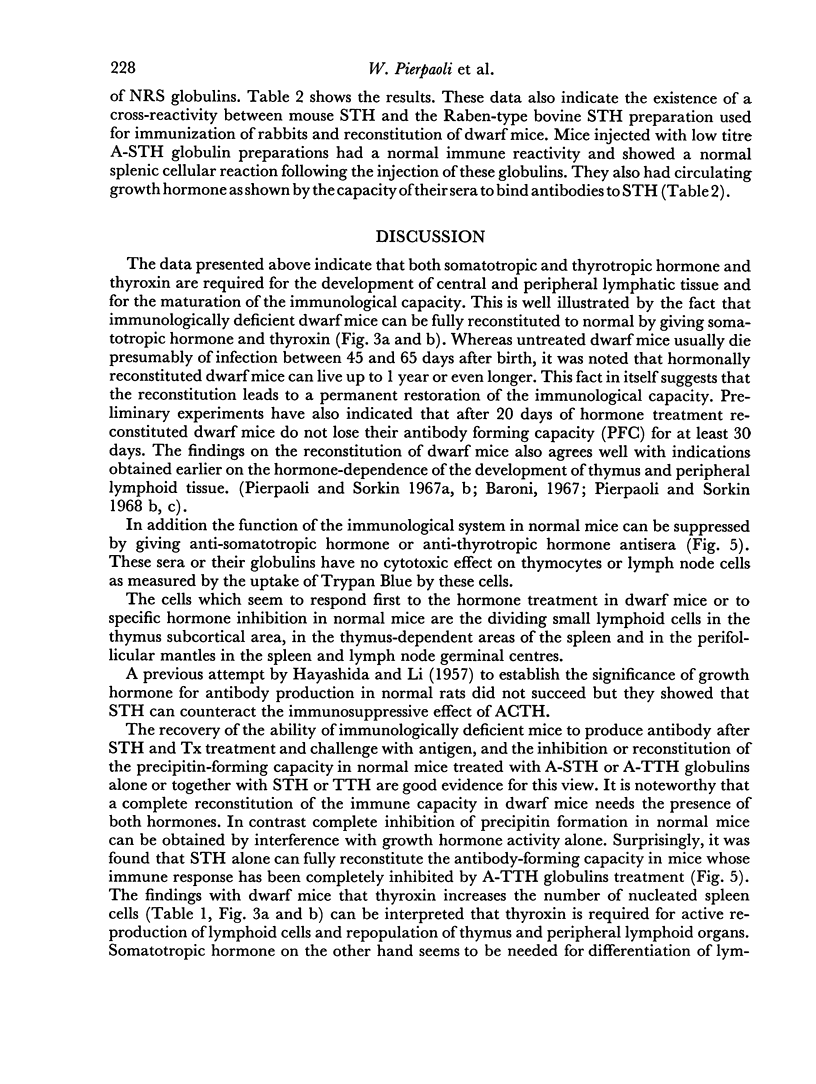
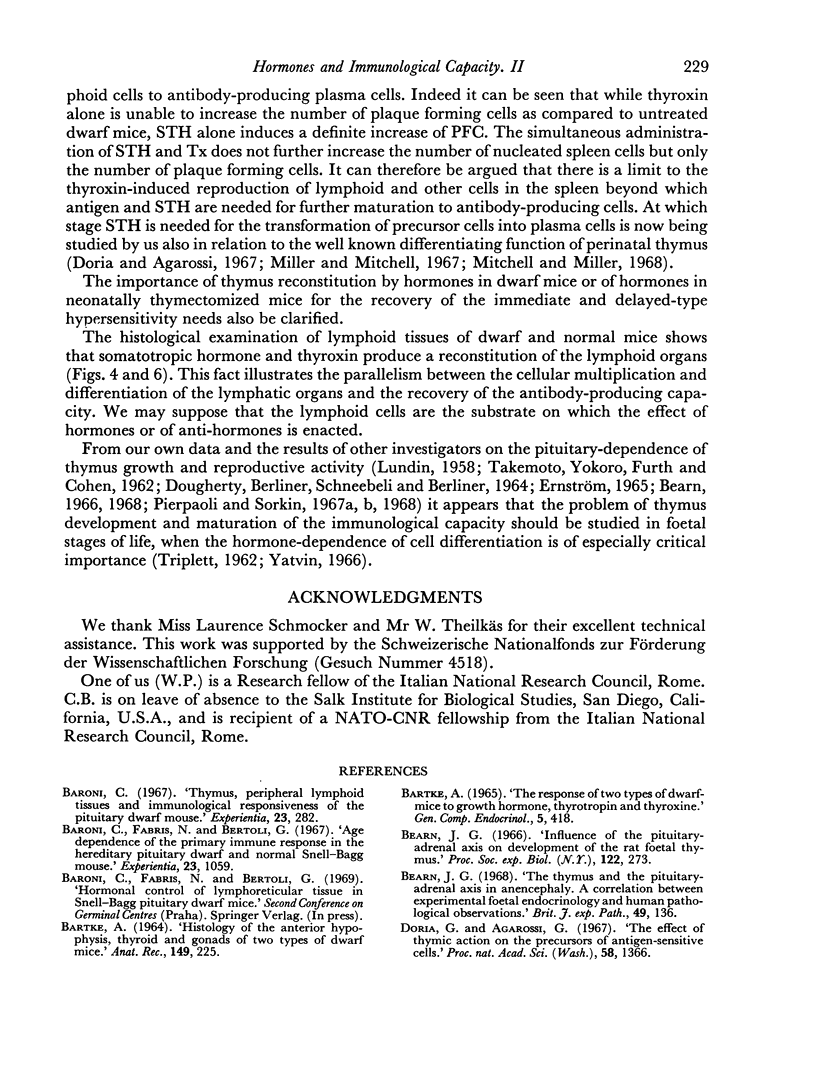
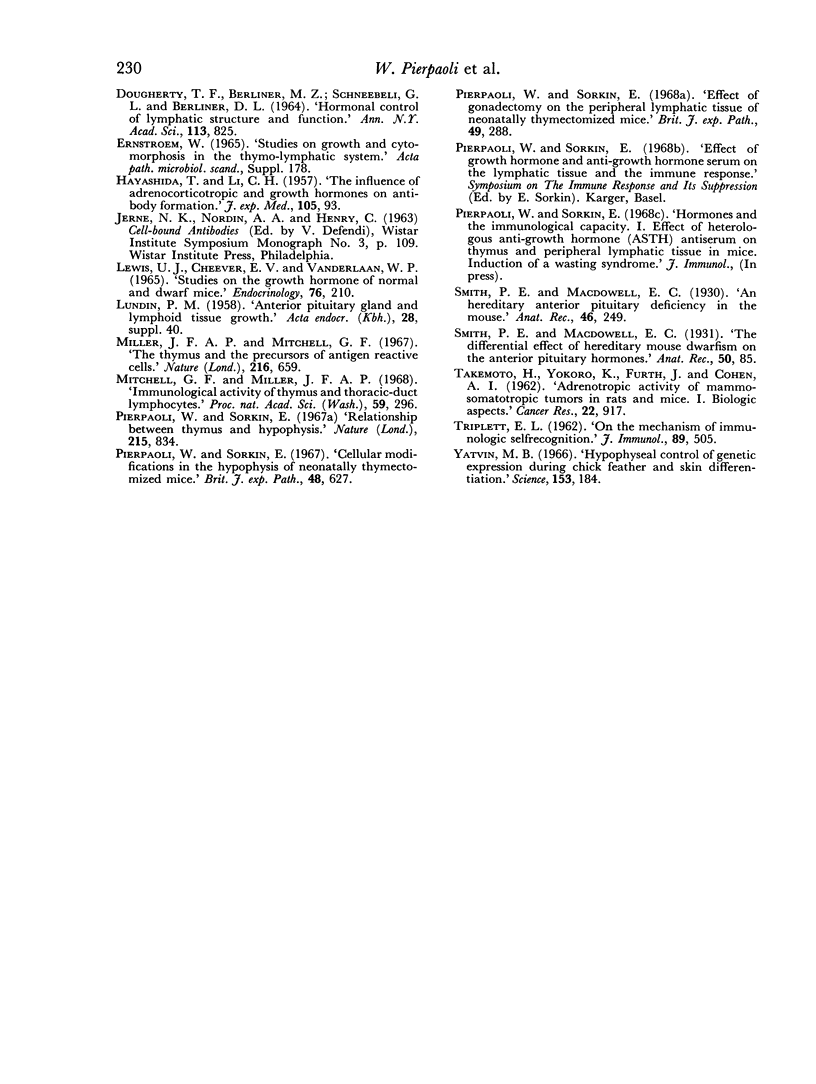
Images in this article
Selected References
These references are in PubMed. This may not be the complete list of references from this article.
- BARTKE A. HISTOLOGY OF THE ANTERIOR HYPOPHYSIS, THYROID AND GONADS OF TWO TYPES OF DWARF MICE. Anat Rec. 1964 Jun;149:225–235. doi: 10.1002/ar.1091490206. [DOI] [PubMed] [Google Scholar]
- Baroni C., Fabris N., Bertoli G. Age dependency of the primary immune response in the hereditary pituitary dwarf and normal Snell-Bagg mouse. Experientia. 1967 Dec 15;23(12):1059–1060. doi: 10.1007/BF02136450. [DOI] [PubMed] [Google Scholar]
- Baroni C. Thymus, peripheral lymphoid tissues and immunological responsiveness of the pituitary dwarf mouse. Experientia. 1967 Apr 15;23(4):282–283. doi: 10.1007/BF02135688. [DOI] [PubMed] [Google Scholar]
- Bartke A. The response of two types of dwarf mice to growth hormone, thyrotropin, and thyroxine. Gen Comp Endocrinol. 1965 Aug;5(4):418–426. doi: 10.1016/0016-6480(65)90102-4. [DOI] [PubMed] [Google Scholar]
- Bearn J. G. Influence of the pituitary-adrenal axis on development of the rat foetal thymus. Proc Soc Exp Biol Med. 1966 May;122(1):273–275. doi: 10.3181/00379727-122-31109. [DOI] [PubMed] [Google Scholar]
- Bearn J. G. The thymus and the pituitary-adrenal axis in anencephaly. A correlation between experimental foetal endocrinology and human pathological observations. Br J Exp Pathol. 1968 Apr;49(2):136–144. [PMC free article] [PubMed] [Google Scholar]
- DOUGHERTY T. F., BERLINER M. L., SCHNEEBELI G. L., BERLINER D. L. HORMONAL CONTROL OF LYMPHATIC STRUCTURE AND FUNCTION. Ann N Y Acad Sci. 1964 Feb 28;113:825–843. doi: 10.1111/j.1749-6632.1964.tb40707.x. [DOI] [PubMed] [Google Scholar]
- Doria G., Agarossi G. The effect of thymic action on the precursors of antigen-sensitive cells. Proc Natl Acad Sci U S A. 1967 Oct;58(4):1366–1372. doi: 10.1073/pnas.58.4.1366. [DOI] [PMC free article] [PubMed] [Google Scholar]
- HAYASHIDA T., LI C. H. The influence of adrenocorticotropic and growth hormones on antibody formation. J Exp Med. 1957 Feb 1;105(2):93–98. doi: 10.1084/jem.105.2.93. [DOI] [PMC free article] [PubMed] [Google Scholar]
- LEWIS U. J., CHEEVER E. V., VANDERLAAN W. P. STUDIES ON THE GROWTH HORMONE OF NORMAL DWARF MICE. Endocrinology. 1965 Feb;76:210–215. doi: 10.1210/endo-76-2-210. [DOI] [PubMed] [Google Scholar]
- Miller J. F., Mitchell G. F. The thymus and the precursors of antigen reactive cells. Nature. 1967 Nov 18;216(5116):659–663. doi: 10.1038/216659a0. [DOI] [PubMed] [Google Scholar]
- Mitchell G. F., Miller J. F. Immunological activity of thymus and thoracic-duct lymphocytes. Proc Natl Acad Sci U S A. 1968 Jan;59(1):296–303. doi: 10.1073/pnas.59.1.296. [DOI] [PMC free article] [PubMed] [Google Scholar]
- Pierpaoli W., Sorkin E. Cellular modifications in the hypophysis of neonatally thymectomized mice. Br J Exp Pathol. 1967 Dec;48(6):627–631. [PMC free article] [PubMed] [Google Scholar]
- Pierpaoli W., Sorkin E. Effect of gonadectomy on the peripheral lymphatic tissue of neonatally thymectomized mice. Br J Exp Pathol. 1968 Jun;49(3):288–293. [PMC free article] [PubMed] [Google Scholar]
- TAKEMOTO H., YOKORO K., FURTH J., COHEN A. I. Adrenotropic activity of mammo-somatotropic tumors in rats and mice. I. Biologic aspects. Cancer Res. 1962 Sep;22:917–924. [PubMed] [Google Scholar]
- TRIPLETT E. L. On the mechanism of immunologic self recognition. J Immunol. 1962 Oct;89:505–510. [PubMed] [Google Scholar]
- Yatvin M. B. Hypophyseal control of genetic expression during chick feather and skin differentiation. Science. 1966 Jul 8;153(3732):184–185. doi: 10.1126/science.153.3732.184. [DOI] [PubMed] [Google Scholar]





